Best Trading platforms
The best trading platform for you depends on your trading style and preferences. Consider factors such as fees, ease of use, and trading tools when comparing platforms. Popular options include MetaTrader 4 and 5, cTrader, and TradingView. Research and test a few platforms before committing to one.
When trading financial instruments, choosing the right trading platform is crucial. With so many trading platform options available, deciding which platform to use can be overwhelming. However, there are certain factors to consider when researching trading platforms to help you make an informed decision. Factors such as fees and commissions, user interface, available markets, tradable financial instruments, security, and customer support can significantly impact your trading experience. By taking the time to research and evaluate different trading platforms, you can select one that meets your investment goals and suits your trading style.
In this context, it is important to remember that each trader has unique needs and preferences, so the best platform for one person might not be the best for another. Therefore, assessing your requirements before selecting trading platform is essential. In this way, you can find a trading platform that offers the features and tools you need to make informed trading decisions in the financial markets.
MT4 is a basic platform suitable for beginners and traders who need custom indicators and automated trading systems. MT5 is a more advanced platform with a wider range of financial instruments and more advanced features for professional traders. cTrader is a modern platform with advanced risk management features and a powerful backtesting feature for traders who prefer a sleek and efficient interface. Other trading platforms are proprietary to that specific brokerage, and trading features vary.
Over the last decade, the use of trading platforms has increased significantly as more and more traders and investors turn to electronic platforms to execute trades in financial markets. This trend has been driven by technological advancements, increased internet access, and growing demand for faster and more efficient trading.
According to a report by Statista, the number of active retail traders using trading platforms worldwide is expected to reach 100 million by 2026, up from 17 million in 2017. Retail trader data shows a significant increase in the adoption of trading platforms over the last decade.
Additionally, the COVID-19 pandemic in 2020 has accelerated the adoption of online trading platforms, as many traders and investors were forced to work from home and trade remotely. COVID lockdown led to a surge in demand for online trading platforms and has further driven the industry's growth.
Overall, the use of trading platforms has increased rapidly in the last 10 years and is expected to continue to grow in the coming years as more traders and investors adopt electronic trading platforms as their preferred method of executing trades in financial markets.
Best Trading platforms Table of Contents
- Best Trading Platforms
- Different Types of Trading Platforms
- Desktop Trading Platforms
- Web-Based Trading Platforms
- Mobile Trading Platforms
- Social Trading Platforms
- What Trading Platform Software Is Available
- Trading Platform Software Compared
- MetaTrader 4 (MT4)
- How many traders use MT4?
- MetaTrader 5 (MT5)
- How many traders use MT5?
- cTrader
- How many traders use cTrader?
- eToro
- How many traders use eToro?
- TradingView
- How many traders use TradingView?
- NinjaTrader
- How many traders use NinjaTrader?
- Compare Trading Platform Features
- How Trading Platforms Work
- Market Data and Order Entry
- Order Management
- Account Management
- Research and Analysis
- Customer Support
- Features and Tools Offered by Trading Platforms
- Real-Time Market Data
- Order Types
- Charting and Technical Analysis Tools
- News and Research
- Mobile Compatibility
- Social Trading
- Account Management
- Customer Support
- How To Choose the Right Trading Platform for Your Needs
- Security and Regulation
- Asset Classes and Instruments
- Trading Tools and Features
- Fees and Commissions
- User Interface and Customer Support
- Fees Associated With Using a Trading Platform
- Commission
- Spread
- Deposit and Withdrawal Fees
- Inactivity Fees
- Market Data Fees
- Other Fees
- How To Open an Account With a Trading Platform
- Step 1: Research and Choose a Platform
- Step 2: Register and Verify Your Account
- Step 3: Fund Your Account
- Step 4: Choose Your Trading Settings
- Step 5: Start Trading
- Types Of Assets You Can Trade On a Trading Platform
- Equities
- Forex
- Commodities
- Indices
- Cryptocurrencies
- Minimum Investment Required To Use a Trading Platform
- Trade Execution Speed on a Trading Platform
- Liquidity
- Order Type
- Internet Connection
- Monitoring Your Investments On a Trading Platform
- Portfolio Overview
- Real-Time Quotes and Charts
- Alerts and Notifications
- Research and Analysis Tools
- Tax Reporting
- Analysis Tools Available on a Trading Platform
- Technical Analysis Tools
- Fundamental Analysis Tools
- Sentiment Analysis Tools
- Backtesting Tools
- Risk Management Tools
- Level Of Security Provided By a Trading Platform
- Encryption
- Two-Factor Authentication
- Regulation
- Fraud Protection
- Secure Payment Processing
- Customer Support and Service on a Trading Platform
- 24/7 Support
- Knowledge Base
- Dedicated Account Managers
- Community Forums
- Education Resources
- Margin Trading on a Trading Platform
- Margin Requirements
- Leverage Limits
- Risk Management Tools
- Risks Associated with Using a Trading Platform
- Market Risks
- Leverage Risks
- Cybersecurity Risks
- Technical Risks
- Regulatory Risks
- How Does a Trading Platform Handle Regulatory Compliance?
- How Trading Platforms Handle Tax Reporting And Implications?
- Trading Platforms Verdict
- Best Trading platforms List Compared

Best Trading Platforms
A trading platform is a software application that enables investors and traders to buy and sell securities such as stocks, bonds, options, futures, and currencies through a financial intermediary. The platform provides access to financial markets and offers various tools and features to assist traders in making informed decisions about their trades.
Brokers may offer multiple trading platforms software like MT4, MT5, cTrader, and NinjaTrader or have bespoke trading platform software.
Trading platforms can be desktop-based, web-based, or mobile-based. They may offer different levels of functionality, such as real-time market data, charting and technical analysis tools, news and research, and order management capabilities.
Some trading platforms are designed for specific types of traders or markets, such as day traders or forex traders. Others may offer a broad range of products and services for all types of investors.
Popular examples of trading platforms include MetaTrader, eToro, Robinhood, TD Ameritrade, and Interactive Brokers.
Different Types of Trading Platforms
Several trading platforms are available for investors and traders, each with unique features and benefits. Some of the most common types of trading platforms are:
Desktop Trading Platforms
Desktop trading platforms are software applications installed on a computer. They offer advanced functionality and are typically used by professional traders who require real-time market data, advanced charting tools, and custom indicators. Examples of desktop trading platforms include MetaTrader, cTrader, and NinjaTrader.
Web-Based Trading Platforms
Web-based trading platforms are accessed through a web browser and do not require any software installation. They are more accessible than desktop trading platforms, as they can be accessed from any device with an internet connection. Web-based trading platforms typically offer a range of trading tools, real-time market data, and mobile compatibility. Examples of web-based trading platforms include eToro, Plus500, and TradingView.
Mobile Trading Platforms
Mobile trading platforms are designed for online trading and can be accessed through a mobile device such as a smartphone or tablet. They are ideal for traders who need to monitor the markets and make trades away from their computers. Mobile trading platforms typically offer basic trading tools, real-time market data, and push notifications. Examples of mobile trading platforms include Robinhood, TD Ameritrade Mobile, and MetaTrader 5.
Social Trading Platforms
Social trading platforms allow traders to share their trading strategies and ideas with other traders and follow and copy successful traders' trades. These platforms can be web-based or mobile-based and typically offer features such as a social news feed, a leaderboard of top traders, and a range of trading tools. Examples of social trading platforms include eToro, ZuluTrade, and Darwinex.
Overall, the choice of trading platform depends on the individual trader's needs and preferences and the type of trading they plan to do.
What Trading Platform Software Is Available
There are many trading platform software available in the market. Some trading platforms may specialize in certain markets or types of assets, while others may have a more diverse offering. Some platforms may only be available to users in certain countries or regions. Researching and choosing a platform that best fits your trading goals and needs is important. Here are some of the most popular ones:
- MetaTrader 4 (MT4)
- MetaTrader 5 (MT5)
- cTrader
- eToro
- TradingView
- NinjaTrader
- Interactive Brokers TWS
- thinkorswim
- E*TRADE Pro
- Robinhood Trading App
Trading Platform Software Compared
With so many trading platform software options available, knowing which one to choose can be difficult. Here's a breakdown of some of the most popular trading platforms and their features:
MetaTrader 4 (MT4)
MT4 is a popular trading platform used by forex traders. It offers advanced charting tools, customizable indicators, and the ability to use automated trading strategies. MT4 is one of the most popular trading platforms among forex traders.
How many traders use MT4?
85% of all retail forex trading is done on the MetaTrader 4 platform. Many brokers report that traders widely use MT4 for their activities. MT4, introduced in 2005, remains popular due to its easy-to-use interface, advanced tools for technical analysis, and support for automated trading. Its long-standing presence and support from many brokers have helped it maintain its position as the top choice for traders worldwide.
MetaTrader 5 (MT5)
MT5 is the successor to MT4 and offers even more advanced features and recently gained a larger number of users over MT4. It includes additional charting tools, an economic calendar, and more order types. MT5 also supports trading in stocks, commodities, CFDs, futures, and forex.
How many traders use MT5?
A significant number of traders use MT5 for their trading activities. Additionally, MT5 is gradually gaining wider adoption among modern brokers and traders.
cTrader
cTrader is a trading platform known for its advanced charting capabilities and order management tools. It is popular among CFD and Forex traders and supports commodities and indices trading.
How many traders use cTrader?
cTrader, it has been reported that they have over 100,000 active traders and is offered by over 200 brokers worldwide. cTrader has a significant user base, although it may not be as widely adopted as MT4 or MT5. Additionally, cTrader is known for its advanced charting capabilities, user-friendly interface, and extensive range of order types, contributing to its popularity among traders.
eToro
eToro is a bespoke social trading platform that allows traders to copy the trades of other successful traders. It also offers various educational resources and social trading features to help new traders learn and improve their skills.
How many traders use eToro?
According to eToro's website, as a trading platform has over 30 million registered users worldwide. eToro has a significant user base, although it is unclear how many users are active traders. Additionally, eToro is known for its user-friendly interface, range of trading instruments, and social trading features, contributing to its popularity among traders.
TradingView
TradingView is a web-based charting platform that offers advanced charting tools and a community of traders sharing trading ideas and analysis. It supports trading in forex, stocks, cryptocurrencies, and more.
How many traders use TradingView?
TradingView's website shows the platform has over 30 million active users worldwide, including traders, investors, and analysts. TradingView has a significant user base, although it is unclear how many users are active traders. Additionally, TradingView is known for its user-friendly interface, extensive library of charting tools and indicators, and social features, which have contributed to its popularity among traders.
NinjaTrader
NinjaTrader is a platform popular among futures traders. It offers advanced charting tools, backtesting capabilities, and the ability to use automated trading strategies.
How many traders use NinjaTrader?
According to Ninjatrader's website, the platform has over 60,000 users worldwide, although it is unclear how many are active traders. Additionally, NinjaTrader is known for its advanced charting capabilities, market analysis tools, and automation features, contributing to its popularity among traders. It is also important to note that NinjaTrader offers both a free and a paid version of its platform, which may attract traders with different budgets and styles.
Compare Trading Platform Features
We compare trading platform software features below. The table below provides a general overview of the features and tools offered by the main trading platforms available in 2026, tools and features may be subject to change, and availability may differ depending on your country of residence. You must research and evaluate each platform based on your trading needs and preferences.
| Platform | Interface | Type | Financial Instruments | Order Types | Charting & Technical Analysis | Automated Trading | Backtesting | Risk Management | Multi-currency Support | Depth of Market | Mobile App | Desktop App | Social Trading |
|---|---|---|---|---|---|---|---|---|---|---|---|---|---|
| MT4 | Basic | 3rd Party Software | Forex, CFDs | Limited | Advanced | Yes | Yes | Limited | Limited | No | Yes | No | No |
| MT5 | Advanced | 3rd Party Software | Forex, Stocks, Commodities, Indices, Futures, Options, CFDs, ETFs | Advanced | Advanced | Yes | Advanced | Advanced | Yes | Yes | Yes | No | No |
| cTrader | Advanced | 3rd Party Software | Forex, Stocks, Commodities, Indices, Futures, Options, CFDs, ETFs | Advanced | Advanced | Yes | Advanced | Advanced | Yes | Yes | Yes | No | No |
| eToro | Modern | Proprietary | Forex, Stocks, Commodities, Indices, Crypto, CFDs | Basic | Advanced | Yes | No | Basic | No | No | Yes | No | Yes |
| TradingView | Modern | Proprietary | Forex, Stocks, Commodities, Indices, Crypto, Futures, ETFs | Advanced | Advanced | No | Advanced | Basic | No | Yes | Yes | No | No |
| NinjaTrader | Advanced | 3rd Party Software | Forex, Stocks, Commodities, Indices, Futures, CFDs | Advanced | Advanced | Yes | Advanced | Advanced | No | No | Yes | No | No |
| Interactive Brokers TWS | Advanced | Proprietary | Forex, Stocks, Commodities, Indices, Options, Futures, ETFs | Advanced | Advanced | Yes | Advanced | Advanced | Yes | Yes | Yes | No | No |
| thinkorswim | Advanced | Proprietary | Forex, Stocks, Commodities, Indices, Options, Futures, ETFs | Advanced | Advanced | Yes | Advanced | Advanced | No | Yes | Yes | No | No |
| e*Trade | Basic | Proprietary | Stocks, Indices, Options, Futures | Limited | Advanced | No | No | Basic | No | No | Yes | No | No |
| Robinhood | Basic | Proprietary | Stocks, Commodities, Indices, Options, Crypto | Limited | Basic | No | No | Basic | No | No | Yes | No | No |
How Trading Platforms Work
Trading platforms enable investors and traders to access financial markets and trade various financial instruments. Here's how they work:
Market Data and Order Entry
Trading platforms provide real-time market data, such as price quotes and charts, to help traders decide when to buy or sell securities. Traders can enter orders to buy or sell securities directly from the trading platform, then routed to the appropriate exchange or market maker.
Order Management
Once an order has been placed, the trading platform manages it until it is filled. Traders can view the status of their orders and modify or cancel them if necessary. Some trading platforms offer advanced order types, such as stop-loss and trailing stop orders, which can help traders manage their risk.
Account Management
Trading platforms provide tools for managing trading accounts, including account balances, open positions, and transaction history. Traders can fund their accounts, view statements, and access tax reporting tools through the trading platform.
Research and Analysis
Many trading platforms offer research and analysis tools to help traders make informed decisions. These tools may include news feeds, market analysis, charting and technical analysis tools, and access to third-party research and data sources.
Customer Support
Trading platforms typically offer customer support to assist traders with any issues they may encounter while using the platform. Trading platform customer support may include phone or chat, email, or access to a knowledge base or user community.
Overall, trading platforms provide traders access to financial markets and a range of tools and features to help them make informed trading decisions.
Features and Tools Offered by Trading Platforms
Trading platforms offer many features and tools to help investors and traders make informed trade decisions. Here are some of the most common features and tools offered by trading platforms:
Real-Time Market Data
Trading platforms provide real-time market data, such as price quotes, charts, and news feeds, to help traders monitor financial markets and identify trading opportunities.
Order Types
Trading platforms offer a range of order types, including market orders, limit orders, stop-loss orders, and trailing stop orders, to help traders manage their trades and minimize their risk.
Charting and Technical Analysis Tools
Trading platforms provide charting and technical analysis tools, such as indicators, drawing tools, and chart indicators, to help traders analyze price trends and identify trading opportunities.
News and Research
Trading platforms offer news and research tools, such as news feeds, market analysis, and economic calendars, to help traders stay up-to-date on market events and make informed trading decisions.
Mobile Compatibility
Trading platforms offer mobile compatibility, allowing traders to access the platform and trade on the go using their smartphone or tablet.
Social Trading
Trading platforms offer social trading features, such as the ability to follow and copy the trades of other traders, to help traders learn from and collaborate with other traders.
Account Management
Trading platforms provide tools for managing trading accounts, including account balances, open positions, and transaction history.
Customer Support
Trading platforms offer customer support to assist traders with any issues they may encounter while using the platform.
Overall, trading platforms offer a range of features and tools to help traders make informed trading decisions and manage their trades effectively.
How To Choose the Right Trading Platform for Your Needs
With so many trading platforms available, choosing the right one for your needs can be challenging. Here are some factors to consider when selecting a trading platform:
Security and Regulation
Security and regulation are essential considerations when selecting a trading platform. Look for a platform regulated by a reputable financial authority that offers robust security features, such as two-factor authentication and encryption, to protect your account and personal information.
Asset Classes and Instruments
Consider the asset classes and instruments you want to trade and ensure that your chosen platform offers access to those markets. For example, if you want to trade forex, look for a platform that offers a wide range of currency pairs and access to major forex exchanges.
Trading Tools and Features
Look for a trading platform that offers the tools and features to trade effectively, such as real-time market data, order types, charting and technical analysis tools, and news and research tools. Consider whether the platform offers mobile compatibility and social trading features.
Fees and Commissions
Compare the fees and commissions charged by different trading platforms and consider how they will impact your trading performance. Look for a platform with competitive fees and transparent pricing.
User Interface and Customer Support
Consider the user interface, ease of use of the trading platform, and the quality of customer support offered by the platform. Look for a platform with a user-friendly interface and responsive customer support that can assist you with any issues you encounter while using the platform.
Overall, selecting the right trading platform requires careful consideration of your needs and preferences and understanding the features and tools offered by different platforms. Research multiple options, read reviews and compare features before making a decision.
Fees Associated With Using a Trading Platform
Trading platforms typically charge various fees for their services. Here are some of the most common fees associated with using a trading platform:
Commission
Most trading platforms charge a commission for each trade you make. The commission is typically a percentage of the trade's value and can vary based on the size of the trade, the asset class you're trading, and other factors.
Spread
Some trading platforms charge a spread instead of a commission. The spread is the difference between an asset's bid and ask price and represents the platform's profit on the trade.
Deposit and Withdrawal Fees
Trading platforms may charge fees for depositing or withdrawing funds from your trading account. These fees can vary depending on your payment method and may be charged by the platform or the payment provider.
Inactivity Fees
Some trading platforms charge inactivity fees if you don't make any trades for a certain period. These fees are designed to encourage traders to use the platform actively and can be charged monthly or yearly.
Market Data Fees
Trading platforms may charge fees for accessing real-time market data, such as price quotes and news feeds. These fees can vary depending on the type of data you want to access and the frequency of your access.
Other Fees
Some trading platforms may charge additional fees for other services, such as account management or customer support. These fees can vary depending on the platform and the services provided.
When choosing a trading platform, it's essential to consider the fees associated with the platform and how they will impact your trading performance. Look for a platform with transparent pricing and competitive fees that align with your trading style and budget.
How To Open an Account With a Trading Platform
If you're interested in using a trading platform to trade financial instruments, here's a general overview of the steps you'll need to take to open an account:
Step 1: Research and Choose a Platform
Research different trading platforms to find one that offers the features, tools, and asset classes you're interested in trading. Consider factors such as regulation, security, fees, and customer support when choosing.
Step 2: Register and Verify Your Account
Once you've chosen a platform, navigate to its website and click the 'register' or 'sign up' button. Fill in the required personal and contact information and submit your application. Depending on the platform, you may also need to provide additional documentation to verify your identity and address, such as a government-issued ID or a utility bill.
Step 3: Fund Your Account
Once your account is approved, you must fund it with the minimum required deposit. Trading platforms typically offer several payment methods, such as credit cards, bank transfers, and e-wallets. Choose the method that's most convenient and affordable for you.
Step 4: Choose Your Trading Settings
After funding your account, you can customize your trading settings, such as the asset classes and instruments you want to trade, your trading strategy, and your risk management approach. You can also set up alerts for important market events and changes.
Step 5: Start Trading
With your account funded and your trading settings configured, you can start trading. Log in to your trading platform, choose the asset and instrument you want to trade and execute your trade according to your chosen strategy and risk management approach.
Opening an account with a trading platform is typically straightforward and can be completed in a few steps. However, it's important to read the platform's terms and conditions carefully and understand the risks involved in trading before committing to a platform.
Types Of Assets You Can Trade On a Trading Platform
Trading platforms offer a variety of asset classes and instruments for traders to trade. Here are some of the most common asset classes you can trade on a trading platform:
Equities
Equities, also known as stocks or shares, represent ownership in a company. Trading platforms allow traders to buy and sell equities of publicly traded companies worldwide.
Forex
The foreign exchange market, or forex, is the world's largest and most liquid financial market. Trading platforms allow traders to buy and sell currency pairs, such as EUR/USD or USD/JPY and speculate on their future price movements.
Commodities
Commodities are physical goods traded on financial markets, such as gold, silver, oil, and agricultural products. Trading platforms allow traders to buy and sell commodity futures contracts or exchange-traded funds (ETFs) that track the price of commodities.
Indices
Indices are collections of stocks that represent a specific sector or region of the stock market. Trading platforms allow traders to buy and sell index futures or ETFs that track the performance of major indices, such as the S&P 500, the Dow Jones Industrial Average, or the Nikkei 225.
Cryptocurrencies
Cryptocurrencies are digital assets that use cryptography to secure their transactions and control the creation of new units. Trading platforms allow traders to buy and sell cryptocurrencies like Bitcoin, Ethereum, or Litecoin and speculate on their future price movements.
When choosing a trading platform, consider which asset classes and instruments you're interested in trading and whether the platform offers access to those markets. Also, remember that different assets have different risks and require different trading strategies and skills.
Minimum Investment Required To Use a Trading Platform
The minimum investment required to use a trading platform varies depending on the platform and the asset class you want to trade. Some trading platforms require a minimum deposit of just a few hundred dollars, while others may require thousands or even tens of thousands.
For example, if you want to trade equities on a platform that charges a flat commission per trade, the minimum investment may be as low as $0 or $500. However, if you want to trade futures contracts or options on a platform that requires margin, you may need to deposit at least $5,000 or more to meet the margin requirements.
It's important to note that the minimum investment required to use a trading platform is not the same as the minimum investment required to trade a specific asset. For example, the minimum investment required to buy a single share of a stock may be $50, but the minimum deposit required to use the trading platform may be higher.
Before opening an account with a trading platform, ensure you understand the minimum investment requirements and any other fees or charges associated with using the platform. Also, consider your financial situation and investment goals to determine how much you can invest.
Trade Execution Speed on a Trading Platform
The speed at which trades are executed on a trading platform can vary depending on several factors, including the platform's technology, the type of asset being traded, and market conditions.
Most trading platforms use electronic trading systems that can execute trades in milliseconds. However, the time it takes to execute a trade can also depend on the following factors:
Liquidity
The liquidity of an asset refers to how easily it can be bought or sold without affecting its market price. Highly liquid assets, such as major currency pairs, are generally easier and faster to trade than illiquid assets, such as penny stocks or thinly traded futures contracts.
Order Type
Your order type can also affect trade execution speed. Market orders, executed at the current market price, are generally executed more quickly than limit orders, executed at a specified price or better.
Internet Connection
The speed and reliability of your internet connection can also affect the time it takes for a trade to be executed. A slow or unstable internet connection can result in delays or errors in order execution.
It's important to note that even with the fastest technology and optimal trading conditions, trade execution can never be guaranteed to be instantaneous. There may be brief delays or slippage in trade execution, especially during periods of high market volatility or low liquidity.
When choosing a trading platform, it's important to consider the platform's technology and order execution speed, especially if you plan on engaging in high-frequency trading or scalping strategies that require fast and accurate trade execution.
Monitoring Your Investments On a Trading Platform
Most trading platforms provide users with tools to monitor their investments, track their portfolio performance, and analyze market trends. Here are some common features offered by trading platforms to monitor investments:
Portfolio Overview
The portfolio overview is a snapshot of your current holdings and their market value. Portfolio overviews allow you to track your investments and monitor your portfolio's performance over time.
Real-Time Quotes and Charts
Real-time quotes and charts allow you to track the price movements of your invested assets. You can customize these charts to display different timeframes and technical indicators to help you make informed investment decisions.
Alerts and Notifications
Many trading platforms allow you to set up alerts and notifications for specific assets or market events. You can receive an email, SMS, or push notifications on your mobile device, so you never miss an important market movement.
Research and Analysis Tools
Trading platforms often provide access to research reports, news feeds, and analysis tools to help you stay up-to-date on market trends and make informed investment decisions.
Tax Reporting
Some trading platforms offer tax reporting tools that automatically calculate your gains and losses and generate tax reports for the relevant authorities. Tax reporting features can save you time and reduce the risk of errors when filing your taxes.
Regularly monitoring your investments on a trading platform lets you stay informed about your portfolio's performance and adjust your investment strategy as needed.
Analysis Tools Available on a Trading Platform
Most trading platforms offer a variety of analysis tools to help traders make informed investment decisions. Here are some common types of analysis tools you may find on a trading platform:
Technical Analysis Tools
Technical analysis tools are used to analyze the price movements of assets and identify patterns and trends that can help predict future price movements. These tools may include charting tools, trend lines, moving averages, and technical indicators such as MACD, RSI, and Bollinger Bands.
Fundamental Analysis Tools
Fundamental analysis tools evaluate the underlying factors affecting an asset's value, such as financial data, company news, and economic indicators. These tools may include earnings reports, balance sheets, income statements, and economic calendars.
Sentiment Analysis Tools
Sentiment analysis tools evaluate the market's overall sentiment or a particular asset. These tools may analyze social media posts, news articles, and other sources to determine whether investors are bullish or bearish on an asset.
Backtesting Tools
Backtesting tools allow traders to test their trading strategies using historical market data to see how those strategies would have performed in the past. Backtesting can help traders optimize their strategies and identify potential flaws before risking real money in the market.
Risk Management Tools
Risk management tools are used to manage the risks associated with trading. These tools may include stop-loss orders, limit orders, and margin requirements.
By using these analysis tools, traders can make more informed investment decisions and improve their chances of success in the market.
Level Of Security Provided By a Trading Platform
Security is a critical concern regarding trading platforms. Here are some ways that trading platforms provide security:
Encryption
Most trading platforms use encryption to protect users' sensitive data, such as login credentials and financial information. Encryption scrambles data to be unreadable to anyone without the proper decryption key.
Two-Factor Authentication
Many trading platforms offer two-factor authentication as an additional layer of security. Two-factor authentication requires users to provide a second form of authentication, such as a code sent to their phone or email, in addition to their password.
Regulation
Financial authorities often regulateTrading platforms in their operating countries. These regulations may require platforms to adhere to certain security standards, such as storing user data securely and providing regular security audits.
Fraud Protection
Trading platforms may also offer fraud protection measures to protect users from fraudulent activity, such as unauthorized account access or fraudulent trades. These measures may include real-time fraud monitoring and alerts, as well as dispute resolution processes.
Secure Payment Processing
Trading platforms typically use secure payment processing methods to transfer user funds safely and securely. Secure payment processing may involve using third-party payment processors specializing in secure transactions.
Overall, trading platforms take security very seriously and employ various measures to protect their users' privacy and financial information. However, it is still important for users to protect themselves by using strong passwords and enabling two-factor authentication.
Customer Support and Service on a Trading Platform
Customer support and service are important aspects of any trading platform. Here are some ways that trading platforms handle customer support:
24/7 Support
Many trading platforms offer 24/7 support to their users, either through phone, email, or live chat. Round-the-clock support ensures that users can get help whenever needed, regardless of the time of day.
Knowledge Base
Most trading platforms have a knowledge base that answers frequently asked questions and offers guidance on using the platform. Trading knowledge bases can be useful for users new to the platform or having questions about specific features.
Dedicated Account Managers
Some trading platforms offer dedicated account managers to their users. These managers have typically experienced traders who can offer personalized advice and support to help users achieve their trading goals.
Community Forums
Many trading platforms have community forums where users can connect with other traders and exchange ideas and advice. These forums can be a great resource for learning about new strategies and getting help from other users.
Education Resources
Trading platforms may offer educational resources such as webinars, tutorials, and e-books to help users improve their trading skills and knowledge. These resources can be especially helpful for beginners who are just getting started with trading.
Overall, trading platforms strive to provide their users with high-quality customer support and service, with various resources and options available to help users get the help they need.
Margin Trading on a Trading Platform
Margin trading is a feature many trading platforms offer that allows users to trade with leverage. Here are some ways that trading platforms handle margin trading:
Margin Requirements
Trading platforms typically have margin requirements to meet to use margin trading. These requirements may vary depending on the asset traded and the leverage used.
Trading platforms typically have margin requirements to meet to use margin trading. Do these requirements vary depending on the asset traded and the leverage used.
When using margin trading, there is always the risk of a margin call. Margin calls occur when the value of the traded assets drops below a certain level, and the trader must add additional funds to their account to cover the losses. Trading platforms may have different policies when it comes to margin calls, so users need to understand these policies before using margin trading.
Leverage Limits
Trading platforms typically have leverage limits to prevent users from taking too much risk. These limits may vary depending on the asset being traded and the user's account balance.
Risk Management Tools
Many trading platforms offer risk management tools to help users manage their risk when using margin trading. These tools may include stop-loss orders and other features that can help limit potential losses.
Overall, margin trading is a feature that requires careful consideration and understanding of the risks involved. Trading platforms typically have measures to help users manage these risks, but users must educate themselves and use caution when using margin trading.
Risks Associated with Using a Trading Platform
While trading platforms offer a variety of benefits, there are risks involved with using them. Here are some of the main risks associated with using a trading platform:
Market Risks
Trading platforms allow users to buy and sell assets in various markets, such as stocks, commodities, and currencies. These markets can be volatile and unpredictable, and prices fluctuate rapidly due to global events, economic news, and company earnings reports. Market risk means that there is always the risk of losing money when trading on a platform.
Leverage Risks
As mentioned in the previous question, some trading platforms offer margin trading, which allows users to trade with leverage. While this can increase potential profits, it also increases the risk of losses since users borrow money to trade. If the market moves against the user's position, they may be forced to cover losses and potentially lose more than their initial investment.
Cybersecurity Risks
Trading platforms handle sensitive personal and financial information and must have strong cybersecurity measures to protect users' data. However, there is always the risk of data breaches and cyber attacks, which could lead to the theft of funds or identity theft.
Technical Risks
Trading platforms rely on complex technical infrastructure to function properly, and technical issues can occur that may impact the user's ability to trade or access their account. Trading platform technical risks could include issues with the platform's servers, internet connectivity issues, or software glitches. These issues could potentially cause losses or missed opportunities for the user.
Regulatory Risks
Trading platforms must comply with various regulations and laws, which can vary by country and region. Regulation changes could impact users' ability to trade certain assets or use certain features and the platform's overall business operations. The platform may sometimes be forced to cease operations entirely if it cannot comply with new regulations.
Overall, users need to understand the risks of using a trading platform and take steps to mitigate these risks, such as using risk management tools and practising good cybersecurity hygiene. Users should also carefully research and choose a reputable platform with a strong security and reliability track record.
How Does a Trading Platform Handle Regulatory Compliance?
Regulatory compliance is an important aspect of any trading platform. Trading platforms must comply with various regulations to ensure that they operate legally and protect the interests of their clients. Here are some of how trading platforms handle regulatory compliance:
- Licensing and registration: Trading platforms need to be licensed and registered with relevant regulatory authorities in the countries where they operate. Licensing and financial regulation ensures that the platform operates under the supervision of the regulatory authorities and follows the rules and regulations set forth by them.
- Know Your Customer (KYC) procedures: Trading platforms must follow KYC procedures to verify the identity of their clients. KYC is to ensure that they comply with anti-money laundering (AML) regulations and prevent fraud and other illegal activities.
- Transaction monitoring: Trading platforms are required to monitor transactions on their platform for suspicious activity. Transaction monitoring is done to ensure compliance with AML and counter-terrorism financing (CTF) regulations.
- Reporting: Trading platforms must provide regular reports to regulatory authorities on their operations, financial status, and compliance with regulations.
- Adherence to trading rules: Trading platforms must ensure that their clients adhere to trading rules set by regulatory authorities, such as trading limits, minimum investment requirements, and other restrictions.
- Data protection: Trading platforms must follow data protection regulations to ensure that client data is protected and not misused. They must also ensure that their clients are aware of their data protection policies and give consent before collecting and processing their data.
Overall, trading platforms have to take regulatory compliance seriously to ensure that they operate legally and protect the interests of their clients. By adhering to regulations, trading platforms can build trust with their clients and create a safe and secure trading environment.
How Trading Platforms Handle Tax Reporting And Implications?
Regarding tax reporting and implications, trading platforms typically provide some support or resources to help users navigate their trades' tax implications. Here are some of how trading platforms handle tax reporting and implications:
- Providing tax forms and reports: Many trading platforms provide users with tax forms and reports, such as 1099-B forms, which summarise their trading activity and provide the information needed for tax reporting.
- Providing tax resources: Some trading platforms offer resources, such as articles or FAQs, to help users understand the tax implications of their trades and how to report them on their tax returns.
- Partnering with tax professionals: Some trading platforms partner with tax professionals or offer access to tax professionals to help users with their tax reporting.
- Providing cost basis information: Trading platforms may provide users with information on the cost basis of their trades, which is important for calculating capital gains or losses for tax purposes.
It is important to note that trading platforms are not responsible for calculating or reporting user taxes. Ultimately, the user must report their trading activity and any resulting tax implications to the appropriate tax authorities. Trading platforms may provide some support or resources to help users navigate this process, but it is up to the user to ensure they comply with tax laws and regulations.
Trading Platforms Verdict
Trading platforms have revolutionized how people invest in financial markets. They offer convenient access to a wide range of financial assets, tools, and analyses, making it easier for individuals to manage their investments and take advantage of market opportunities.
However, it is important to understand that trading platforms come with risks and costs. Users must be aware of the fees associated with trading on a platform and be mindful of the risks associated with trading in financial markets. They must also comply with tax laws and regulations, as trading activity can have tax implications.
When choosing a trading platform, users should consider their needs and goals and the features, fees, and security measures the platform offers. They should also take advantage of the resources and support provided by the platform, such as customer service and educational resources, to help them make informed decisions about their investments.
In 2017, a survey conducted by the US-based financial services firm, Charles Schwab, found that 51% of Americans had invested in the stock market, up from 48% in 2016.
In 2018, a European Securities and Markets Authority (ESMA) report estimated that there were around 14 million retail traders in the European Union.
In 2019, a survey by the investment platform eToro found that 43% of Millennial and Gen Z respondents had invested in the stock market.
In 2020, during the COVID-19 pandemic, there was a surge in retail trading activity, with many people turning to online trading platforms to invest their money. According to a report by JPMorgan, retail trading accounted for up to 25% of total US equity trading volume in the first half of 2020, up from around 10% in 2019.
In 2021, a survey by the investment platform Robinhood found that the number of new retail investors in the US had increased by 3 million during the first four months of the year, bringing the total number of retail investors on the platform to more than 13 million.
Retail traders have increased over the past few years, with more people turning to online trading platforms to invest their money. However, it is important to note that these numbers are estimates and may not reflect the total number of retail traders worldwide and the risks.
Overall, trading platforms have opened up a new world of opportunities for investors, but it is important for users to approach them with caution and to understand the risks and costs involved.
Best Trading platforms List Compared
| Featured Trading platform Trading Platform | Account Features | Trading Features |
|---|---|---|
| Used By: 180,000 Instruments Available: 232 Stocks Available: 2100 US Stocks: Yes UK Stocks: Yes German Stocks: Yes Japanese Stocks: Yes Indices: Yes Forex Pairs Available: 61 Major Forex Pairs: Yes Minor Forex Pairs: Yes Exotic Forex Pairs: Yes Minimum Deposit: 200 |
Platforms: MT4, MT5, Mirror Trader, ZuluTrade, Web Trader, cTrader, Mac Negative Balance Protection: Inactivity Fee: No Losses can exceed depositsVisit |
|
| Used By: 10,000 Instruments Available: 100 Stocks Available: 53 US Stocks: Yes UK Stocks: Yes German Stocks: Yes Japanese Stocks: Yes Indices: Yes Forex Pairs Available: 35 Major Forex Pairs: Yes Minor Forex Pairs: Yes Exotic Forex Pairs: Yes Minimum Deposit: 10 USD / 10 EUR |
Platforms: MT4, MT5, Mac, Web Trader, cTrader, Tablet & Mobile apps Negative Balance Protection: Inactivity Fee: No Losses can exceed depositsVisit |
|
| Used By: 200,000 Instruments Available: 1000 Stocks Available: 99 US Stocks: Yes UK Stocks: Yes German Stocks: Yes Japanese Stocks: Yes Indices: Yes Forex Pairs Available: 80 Major Forex Pairs: Yes Minor Forex Pairs: Yes Exotic Forex Pairs: Yes Minimum Deposit: 100 |
Platforms: Web Trader, MT4, MT5, AvaTradeGo, AvaOptions, Mac, Mobile Apps, ZuluTrade, DupliTrade, MQL5 Negative Balance Protection: Inactivity Fee: No 71% of retail CFD accounts lose moneyVisit |
|
| Used By: 10,000 Instruments Available: 100 Stocks Available: 10000 US Stocks: Yes UK Stocks: Yes German Stocks: Yes Japanese Stocks: Yes Indices: Yes Forex Pairs Available: 60 Major Forex Pairs: Yes Minor Forex Pairs: Yes Exotic Forex Pairs: Yes Minimum Deposit: 100 |
Platforms: MT4, MT5, IRESS, Mac, Web Trader, Tablet & Mobile apps Negative Balance Protection: Inactivity Fee: No Losses can exceed depositsVisit |
|
| Used By: 10,000 Instruments Available: 50 Stocks Available: 0 US Stocks: No UK Stocks: No German Stocks: No Japanese Stocks: No Indices: No Forex Pairs Available: 65 Major Forex Pairs: Yes Minor Forex Pairs: Yes Exotic Forex Pairs: Minimum Deposit: 10 |
Platforms: MT4, MT5, Tablet & Mobile apps Negative Balance Protection: Inactivity Fee: No Losses can exceed depositsVisit |
|
| Used By: 250,000 Instruments Available: 4000 Stocks Available: 1696 US Stocks: Yes UK Stocks: Yes German Stocks: Yes Japanese Stocks: Yes Indices: Yes Forex Pairs Available: 57 Major Forex Pairs: Yes Minor Forex Pairs: Yes Exotic Forex Pairs: Yes Minimum Deposit: 0 |
Platforms: MT4, Mirror Trader, Web Trader, Tablet & Mobile apps Negative Balance Protection: Inactivity Fee: Yes 76% - 83% of retail investor accounts lose money when trading CFDs with this provider. You should consider whether you understand how CFDs work and whether you can afford to take the high risk of losing your money. Visit |
|
| Used By: 89,000 Instruments Available: 100 Stocks Available: 60 US Stocks: No UK Stocks: No German Stocks: Yes Japanese Stocks: No Indices: Yes Forex Pairs Available: 70 Major Forex Pairs: Yes Minor Forex Pairs: Yes Exotic Forex Pairs: Yes Minimum Deposit: 200 |
Platforms: MT4, MT5, Mac, ZuluTrade, Web Trader, cTrader, Tablet & Mobile apps Negative Balance Protection: Inactivity Fee: Yes CFDs are complex instruments and come with a high risk of losing money rapidly due to leverage. Between 74-89 % of retail investor accounts lose money when trading CFDs. You should consider whether you understand how CFDs work and whether you can afford to take the high risk of losing your moneyVisit |
|
| Used By: 10,000,000 Instruments Available: 1000 Stocks Available: 160 US Stocks: Yes UK Stocks: Yes German Stocks: Yes Japanese Stocks: Yes Indices: Yes Forex Pairs Available: 55 Major Forex Pairs: Yes Minor Forex Pairs: Yes Exotic Forex Pairs: Yes Minimum Deposit: 5 |
Platforms: MT4, MT5, Mac, Web Trader, Tablet & Mobile apps Negative Balance Protection: Inactivity Fee: Yes CFDs are complex instruments and come with a high risk of losing money rapidly due to leverage. 77.74% of retail investor accounts lose money when trading CFDs with this provider. You should consider whether you understand how CFDs work and whether you can afford to take the high risk of losing your money.Visit |
|
| Used By: 10,000 Instruments Available: 130 Stocks Available: 60 US Stocks: Yes UK Stocks: Yes German Stocks: No Japanese Stocks: No Indices: Yes Forex Pairs Available: 45 Major Forex Pairs: Yes Minor Forex Pairs: Yes Exotic Forex Pairs: Yes Minimum Deposit: 100 |
Platforms: MT4, Mac, Mirror Trader, Web Trader, Tablet & Mobile apps Negative Balance Protection: Inactivity Fee: No Losses can exceed depositsVisit |
|
| Used By: 142,500 Instruments Available: 200 Stocks Available: 52 US Stocks: Yes UK Stocks: Yes German Stocks: Yes Japanese Stocks: Yes Indices: Yes Forex Pairs Available: 150 Major Forex Pairs: Yes Minor Forex Pairs: Yes Exotic Forex Pairs: Yes Minimum Deposit: 100 |
Platforms: MT4, MT5, Web Trader, Tablet & Mobile apps Negative Balance Protection: Inactivity Fee: No Your capital is at riskVisit |
|
| Used By: 10,000 Instruments Available: 148 Stocks Available: 64 US Stocks: Yes UK Stocks: Yes German Stocks: Yes Japanese Stocks: Yes Indices: Yes Forex Pairs Available: 40 Major Forex Pairs: Yes Minor Forex Pairs: Yes Exotic Forex Pairs: Yes Minimum Deposit: $100 |
Platforms: MT4, MT5, Mac, Web Trader, Tablet & Mobile apps Negative Balance Protection: Inactivity Fee: No Losses can exceed depositsVisit |
|
| Used By: 10,000 Instruments Available: 100 Stocks Available: 1000 US Stocks: Yes UK Stocks: Yes German Stocks: Yes Japanese Stocks: Yes Indices: No Forex Pairs Available: 100 Major Forex Pairs: Yes Minor Forex Pairs: Yes Exotic Forex Pairs: Yes Minimum Deposit: 0 |
Platforms: MT4, Mac, ZuluTrade, Web Trader, Tablet & Mobile apps Negative Balance Protection: Inactivity Fee: No Losses can exceed depositsVisit |
|
| Used By: 10,000 Instruments Available: 100 Stocks Available: 10 US Stocks: Yes UK Stocks: No German Stocks: No Japanese Stocks: No Indices: Yes Forex Pairs Available: 40 Major Forex Pairs: Yes Minor Forex Pairs: Yes Exotic Forex Pairs: Yes Minimum Deposit: 100 |
Platforms: MT4, MT5, Tablet & Mobile apps Negative Balance Protection: Inactivity Fee: Yes Losses can exceed depositsVisit |
|
| Used By: 500,000 Instruments Available: 1500 Stocks Available: 1500 US Stocks: Yes UK Stocks: Yes German Stocks: Yes Japanese Stocks: No Indices: Yes Forex Pairs Available: 40 Major Forex Pairs: Yes Minor Forex Pairs: Yes Exotic Forex Pairs: Yes Minimum Deposit: 0 |
Platforms: ThinkTrader, MT4, MT5, Mac, Web Trader, Tablet & Mobile apps Negative Balance Protection: Inactivity Fee: Yes CFDs are complex instruments and come with a high risk of losing money rapidly due to leverage. 71.89% of retail investor accounts lose money when trading CFDs with this provider. You should consider whether you understand how CFDs work and whether you can afford to take the high risk of losing your moneyVisit |
|
| Used By: 300,000 Instruments Available: 100 Stocks Available: 0 US Stocks: Yes UK Stocks: Yes German Stocks: Yes Japanese Stocks: Yes Indices: Yes Forex Pairs Available: 150 Major Forex Pairs: Yes Minor Forex Pairs: Yes Exotic Forex Pairs: Yes Minimum Deposit: 1000 |
Platforms: MT4, MT5, ZuluTrade, Web Trader, Tablet & Mobile apps Negative Balance Protection: Inactivity Fee: No Losses can exceed depositsVisit |
Best Trading platform Trading platform Reviews
Read our details broker Trading platform Trading platform reviews, you will find something useful if you are shortlisting a Trading platform Trading platform and trading platform.
- IC Markets Review (read our in depth reviews)
- Roboforex Review (read our in depth reviews)
- AvaTrade Review (read our in depth reviews)
- FP Markets Review (read our in depth reviews)
- NordFX Review (read our in depth reviews)
- XTB Review (read our in depth reviews)
- Pepperstone Review (read our in depth reviews)
- XM Review (read our in depth reviews)
- FXPrimus Review (read our in depth reviews)
- easyMarkets Review (read our in depth reviews)
- Admiral Markets Review (read our in depth reviews)
- Axi Review (read our in depth reviews)
- HYCM Review (read our in depth reviews)
- ThinkMarkets Review (read our in depth reviews)
- Swissquote Review (read our in depth reviews)
Trading platform Trading platform Alternatives
Read about and compare Trading platform Trading platform alternatives. We have indepth side by side comparisons to help you find Trading platform Trading platform related brokers.
- IC Markets Alternatives
- Roboforex Alternatives
- AvaTrade Alternatives
- FP Markets Alternatives
- NordFX Alternatives
- XTB Alternatives
- Pepperstone Alternatives
- XM Alternatives
- FXPrimus Alternatives
- easyMarkets Alternatives
- Admiral Markets Alternatives
- Axi Alternatives
- HYCM Alternatives
- ThinkMarkets Alternatives
- Swissquote Alternatives

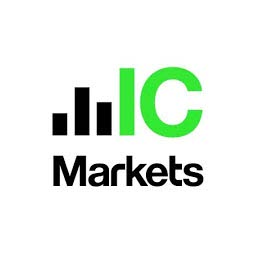 IC Markets
IC Markets
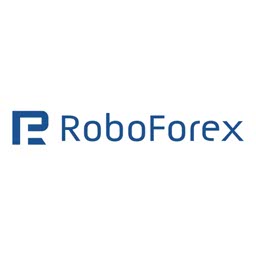 Roboforex
Roboforex
 AvaTrade
AvaTrade
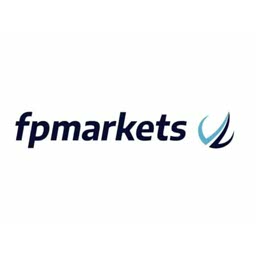 FP Markets
FP Markets
 NordFX
NordFX
 XTB
XTB
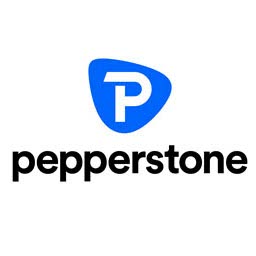 Pepperstone
Pepperstone
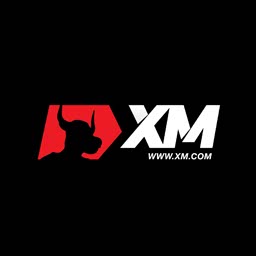 XM
XM
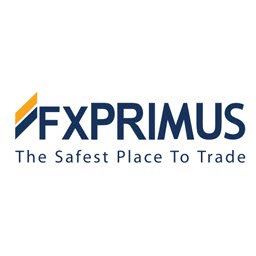 FXPrimus
FXPrimus
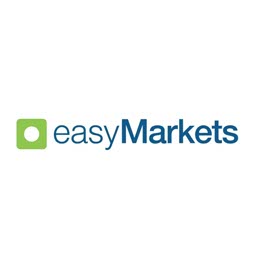 easyMarkets
easyMarkets
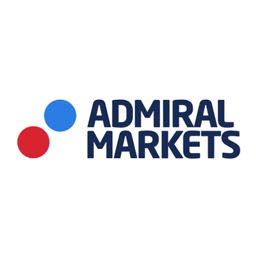 Admiral Markets
Admiral Markets
 Axi
Axi
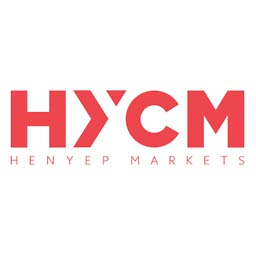 HYCM
HYCM
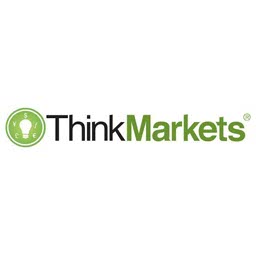 ThinkMarkets
ThinkMarkets
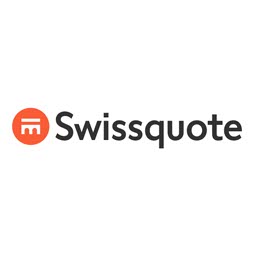 Swissquote
Swissquote
